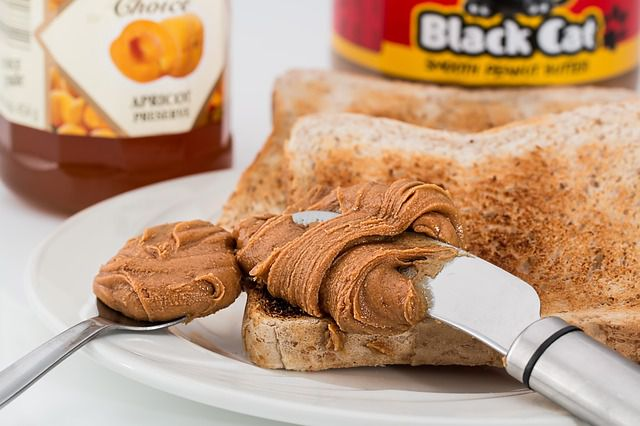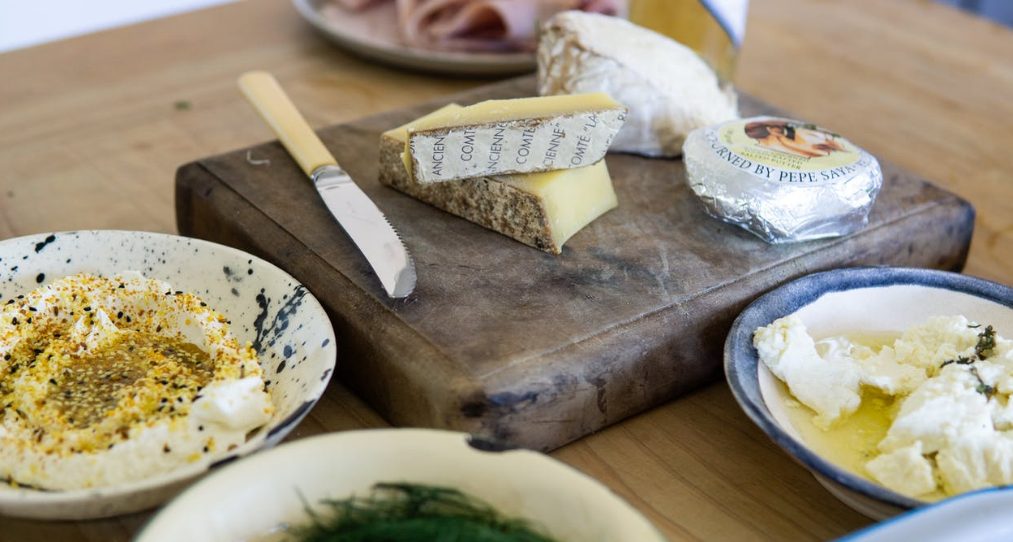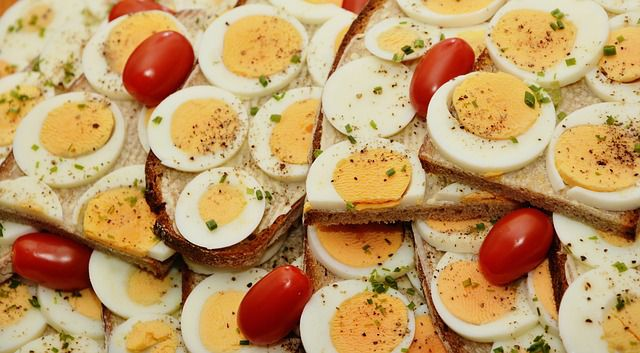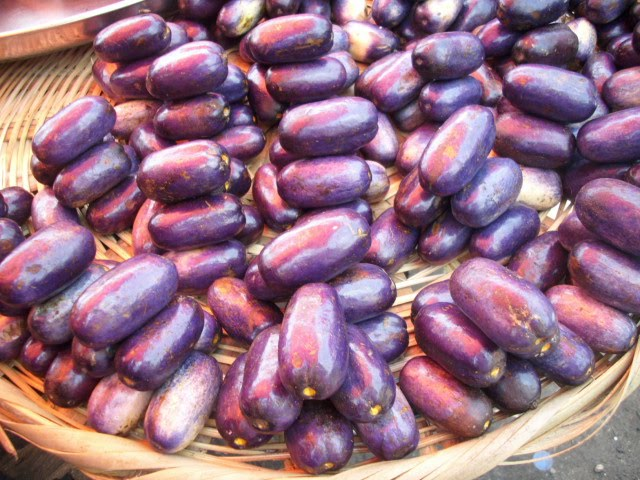What is the spiritual meaning of shea butter? Continue reading for the biblical meaning of butter in a dream and spiritual uses of shea butter. Shea butter is one of the most versatile ingredients in natural skincare. It’s a fat extracted from the nuts of the shea tree, which grows in Africa and can reach heights of 30 meters. Shea butter has been used for centuries by people across West Africa as a skin moisturizer and healer.
The Benefits of Shea Butter for Skin, Hair & Body
Shea butter is an all-natural ingredient that comes from Kaya Butter or African Nilotica Shea Butter. This plant grows wild in Africa and is known as the “tree of life.” Although it is commonly used in cooking, its medicinal properties have been known since ancient times when Africans would use this amazing superfood to treat diseases like malaria, malnutrition and even cancer! Here are just some of the amazing benefits you can get from using Kaya butter:
Spiritual Meaning of Shea Butter in The Dream
The Bambara name (s’í) for the tree is where the English term “shea” originates. The French name for the tree and butter, karité, comes from the Wolof (the Senegalese language) term “ghariti.” Shea butter is referred to as “beurre de karité” in French.
The Shea Tree is referred to as “Vitellaria paradoxa” in botany (previously Butyrospermum parkii). Native to the continent, the African shea tree grows abundantly in West Africa and yields small nuts with seeds like almonds.
SKIN CARE APPLICATIONS OF SHEA BUTTER, BOTH ANCIENT AND MODERN
Ancient Africans are said to have valued shea butter as a valuable skincare and beauty ingredient. It’s reported that Queen Cleopatra of ancient Egypt adored shea butter and received it in clay jars for cosmetic purposes. Nefertiti and the Queen of Sheba also seemed to think highly of it, so it must be good!
Shea butter’s moisturizing qualities can only be achieved by hand, mostly by women, in an arduous procedure that includes gathering, breaking, pounding, roasting, grinding, separating, and shaping the dry nuts into a paste. Here, there is no quick fix!
These days, it’s well-known throughout the world for its great moisture content and calming, moisturizing qualities in makeup. It is renowned for its capacity to lessen postpartum stretch marks.
Shea butter’s emollient qualities aid in softening and smoothing dry skin. The skin is able to retain moisture for longer because to the action of fatty acids. Vitamins, which are abundant in it, help deeply hydrate dry skin. It also has ingredients that can be used to treat eczema.
Here are 4 spiritual meanings associated with shea butter:
1. Nourishment and Rejuvenation
Just as shea butter nourishes and rejuvenates dry skin, it can also symbolize nourishment and rejuvenation in a spiritual sense. In the Bible, there are numerous references to God providing nourishment and renewal to His people. Psalm 23:5 states, “You prepare a table before me in the presence of my enemies. You anoint my head with oil; my cup overflows.” This verse illustrates how God provides for and refreshes His followers, much like shea butter does for the skin.
2. Healing and Restoration
Shea butter’s ability to treat eczema and deeply hydrate dry skin can be seen as a symbol of healing and restoration. In the Bible, there are many stories of Jesus healing the sick and restoring them to wholeness. One such story is found in Mark 5:34, where Jesus tells a woman who had been suffering from bleeding for 12 years, “Daughter, your faith has healed you. Go in peace and be freed from your suffering.” This story reflects the healing and restoration that shea butter can provide to dry, damaged skin.
3. Protection and Comfort
The emollient qualities of shea butter help the skin retain moisture and provide a protective barrier against the elements. This can symbolize protection and comfort in a spiritual sense. In Psalm 91:4, it says, “He will cover you with his feathers, and under his wings you will find refuge; his faithfulness will be your shield and rampart.” Just as shea butter shields the skin, God’s faithfulness can protect and comfort His people.
4. Anointing and Blessing
In some cultures, shea butter is used in rituals of anointing for blessings and protection. This practice can symbolize anointing and blessing in a spiritual context. In the Bible, anointing with oil is a symbol of consecration and empowerment. In James 5:14, it says, “Is anyone among you sick? Let them call the elders of the church to pray over them and anoint them with oil in the name of the Lord.” This verse shows how anointing with oil can bring blessings and healing to those in need.
Conclusion
Shea butter’s emollient qualities not only benefit the physical body but also hold spiritual meanings of nourishment, healing, protection, and blessing. Its rich symbolism can deepen our understanding of the ways in which God provides for and cares for His people, both physically and spiritually.
Spiritual Meaning Of Shea Butter
Shea butter has spiritual meaning? Yes, it’s true. Shea butter is one of the most important African resources because of its various uses and benefits. Today, I will be giving you information on what shea butter is, how it can be used for a variety of uses, and how to purchase it or make it at home.
Few things are as luxurious as shea butter. Whether used as a hair mask, body lotion or face cream, shea butter is enjoyed by women everywhere. But have you ever stopped to consider the spiritual meaning of shea butter? A lot of people don’t spend time thinking about the deeper meanings in life – but maybe they should.
Shea butter; that mysterious gooey looking thing you’ve seen on the shelf and wondered what it was. Well wonder no more, I’m here to shed some light on the spiritual meaning of shea butter. Shea butter is a great moisturizer that also works as a sealant—meaning it can be applied to hair as a leave-in conditioner or used on skin as a moisturizer that absorbs into the skin instead of being left to sit on top like other lotions and creams.
English Meaning: The name Shea is an English baby name. In English the meaning of the name Shea is: Respelling of the surname Shay.
Shea is a name of English origin. In English the meaning of the name Shea is: Respelling of the surname Shay.
It is also used as a unisex name in Dutch, where it means ‘lively’.
The term shea butter refers to both the tree and its fruit, as well as to its nutty-flavored oil extracted from these parts. The butter’s main ingredient is olein which comprises 50–85% of shea butter’s total fatty acid content depending on extraction method and region where it was made.

Celtic Meaning: The name Shea is a Celtic baby name. In Celtic the meaning of the name Shea is: From “séaghdha.” Means “admirable” or “wise.”
- Celtic: The name Shea is a Celtic baby name. In Celtic the meaning of the name Shea is: From “séaghdha.” Means “admirable” or “wise.”
- Islaam: shea butter oil for skin care, shea butter uses for hair, shea butter benefits for skin, what are the benefits of shea butter? Sheabutter health and beauty tips!
- Biblical Meaning: In Biblical Greek it means “admirable” (1 Timothy 1:15). It was also used as a nickname for “Eustace” which means “good fortune” or “fortunate” (Acts 15:22). Other forms include Siaádhach and Shéadhaín. Other Irish names that mean wise include Aoibheann (pronounced Av-in), Deirdre/Dierdre/Deirdriu/Derdriu (pronounced Der-dri), Éibhirín / Eibhin / Eibhlinn (pronounced Ayv-rin) each translated as elegant; Fiona/Fionnuala (/Fiunula) from fair; Grainne / Gráinne (/Graen) from gráinne meaning love; Niamh / Neveah (/Neffah) from niamhiem meaning lightness; Orla / Orlaith/(Orlay)(Orley) from Órlaith meaning noble struggle; Sadbh(Sadhbh)/Sadb(Sadhb)/Sadhbhth(Sadhbth); Sadhma(Sadhma)/Sadhmaidh(Sadhmaidh); Saelechlann saelchoillann seolchoillann seolchollunn etc…
Biblical Meaning Of Butter In A Dream

Shea butter is a natural ingredient that has been used for centuries by women in Africa to moisturize their skin. Shea butter comes from the nut of the shea tree, which grows primarily in West Africa. While it’s not as readily available to purchase as many other types of butters and oils, shea butter can be found at most health food stores (such as Whole Foods) and online through various retailers like Amazon or Etsy.
When purchasing your own shea butter product, be sure to check the ingredients list carefully! There are many different kinds of products on the market that use this ingredient—but they’re not all created equal. Some products may contain artificial fragrances or preservatives; others might have added oils that could potentially irritate sensitive skin types; some may even contain fillers like petroleum jelly instead of pure shea butter itself! If you’re looking for an all-natural product without any additives whatsoever (including fragrance), head straight for brands like Real Raw Foods & Spa so you know exactly what kind of experience you’ll be getting yourself into when using their products!
Gaelic Meaning: The name Shea is a Gaelic baby name. In Gaelic the meaning of the name Shea is: Admired; distinguished.
Shea butter is a great moisturizer and can be used on your skin, hair and nails. Shea butter also has cosmetic properties, so it can be used to help keep the lips soft and supple. It’s also nice for the body as well because of its smooth texture.
Celtic Meaning: The name Siobhan is a Celtic baby name. In Celtic the meaning of the name Siobhan is: God’s gift from heaven. Variant of Joan and Jeanne. Famous bearer Irish Born actress Sinead Cusack, who played Clytemnestra in ‘The Oresteia’.

Siobhan is a Celtic baby name. In Celtic the meaning of the name Siobhan is: God’s gift from heaven. Variant of Joan and Jeanne. Famous bearer Irish Born actress Sinead Cusack, who played Clytemnestra in ‘The Oresteia’.
Siobahn is also used as a female Irish name in Scotland and Ireland as well as an anglicised form of the Gaelic Siobhán (pronounced shevaun). It means “God’s gift”, derived from síod (“gift”) or sioda (“gift”). It can also mean “little gentle one”.
There are many ways to think about meaning and shea butter
dream meaning of butter
What is butter? Butter is a food product made by churning fresh or fermented cream or milk. It consists of butterfat, milk proteins and water, and is used as a spread and cooking ingredient. Butter can also be made from the milk of other mammals, including cows, buffalo, goats, sheeps and yaks. The most common type – in terms of production – is that made from cow’s milk.

Butter is a food product made by churning fresh or fermented cream or milk.
Butter is a dairy product made from cream, which is churned into butter by separating the milk fats from the buttermilk. Butter can be made from the milk of cows, goats and buffalo. The word “butter” comes from the Middle High German word ‘boter’.
Several varieties of butter are available in stores today such as salted butter and unsalted (sweet) butter. Other types of butter include whipped cream, clarified and cultured butters.
Butter can be used for cooking, for spreading on bread, as an ingredient of various dishes, and as a condiment.
Butter is a staple of many cuisines around the world. Butter may be used for cooking, baking, and as a condiment on various dishes. In addition to its culinary uses, butter is used in body care products like skin lotions and lipsticks.
Butter can be used for cooking, baking, and as a condiment; it can also be added to foods for flavor and richness. In addition to its culinary uses, butter is used in body care products such as skin lotions and lipsticks.
Butter consists of butterfat, milk proteins and water.
Butter consists of butterfat, milk proteins and water.
Butter comes from an animal called a cow. The fat in milk is called butterfat. To make butter, you have to separate this fat from the rest of the milk by churning it into cream and then skimming off the top layer that’s rich in butterfat.
Most frequently made from cows’ milk, butter can also be manufactured from the milk of other mammals.

You may have heard of butter being made from the milk of cows, goats and sheep. But did you know that it can also be manufactured from the milk of camels, yaks, reindeer and water buffaloes?
- The most common type of butter is produced by churning fresh or fermented cream until it separates into buttermilk (the liquid) and butter (the solid). Some cultures add salt to their butter to improve flavor.
Butter is used as a spread on bread as well as in cooking recipes such as sauces or casseroles. It’s also frequently used in baking and cake decoration!
It is a semi-solid emulsion at room temperature and firm when refrigerated.
Butter is a semi-solid emulsion of butterfat, water and milk proteins. It is made from the churning of cream or milk. The butterfat globules are coated with a protein coat to produce a long shelf life. Butter can be made from whole milk, low fat milk or skimmed milk depending on the nutritional requirement of customers.
Butter is best stored in an airtight container (that has not been used before). This prevents it from absorbing other odors in your refrigerator and also retains its freshness for longer periods of time
Butter has a pale yellow color, but varies from deep yellow to nearly white.
The color of butter also depends on the breed of cow and its diet, but in general, it tends to be pale yellow with a slight tint of green or blue. If you’ve ever seen photos of French cows grazing on grassy hillsides or hay-filled pastures, that’s what their milk looks like before it becomes butter.
The color depends on how much beta carotene (a plant pigment) has gotten into the milk before being churned into butter. It can range from deep yellow to nearly white depending on whether the cows eat foods high in beta carotene—such as sweet clover—or if they’re fed grain and hay rather than fresh grasses. The temperature at which your butter was stored will affect its color too: refrigerated butter is usually paler than room temperature butter because cold temperatures slow down oxidation in fats and make them less susceptible to discoloration by exposure to light or air. Finally, how long your stick has been sitting out may also affect its appearance: older sticks tend toward darker colors due to exposure to air during storage time periods longer than two weeks (in other words, don’t buy old sticks!)
Its unmodified color is dependent on the cow’s feed and genetics; its fat content is also highly variable.
The color of butter depends on the cow’s feed, genetics and diet. The color can be affected by other factors as well, like breed, gender and age. Cows’ diets also influence the amount of fat in their milk. Many farmers feed their cows grasses rather than grain; this means that grass-fed butters will have less saturated fat than grain-fed butters.
Most other fats contain triglycerides of a single fatty acid chain length with either saturated or unsaturated bonds between the carbons along the chain; in contrast, most of the fatty acids in butterfat have short chains which tend to bend and break at the double bonds, making it easier to produce very small fat globules – these globules are surrounded by a membrane consisting mostly of phospholipids (primarily phosphatidylcholine) and cholesterol.
But what exactly is butterfat? Butterfat is a semi-solid emulsion that consists of several types of molecules. The major one of these is called triglycerides, which are composed of three fatty acids joined to a glycerol backbone via ester bonds (a bond between an alcohol and an organic acid).
The first thing to note about butterfat is that it contains short chain fatty acids (SCFAs), meaning that they have fewer carbon atoms than long-chain fatty acids (LCFAs). SCFAs tend to have more double bonds than LCFAs, which means they can bend and break more easily. These properties make them easier to form small fat globules in milk – when you let milk stand for too long or keep it warm for too long, you end up with big fat globules instead!
There’s a lot more to know about butter than you might have thought!
Butter is made from cream, and it’s a dairy product. You probably already knew that. But do you know that butter was the first form of cheese? Or that it’s actually a solid fat? If you didn’t, don’t feel bad—we had to learn this stuff too!
Butter is made from milk. When milk is churned, the fat separates from the liquid part of milk (called whey). This process creates something called butter oil: buttermilk has more water and less solids than butter oil does—and that’s what makes it taste different than butter! The solid part of milk gets pressed into molds to create blocks or sticks; then they’re salted so they don’t spoil as easily during storage.
spiritual uses of shea butter
Shea butter is a staple in many beauty regimens, but it has a spiritual meaning as well.
The shea tree has been around for thousands of years and grows in the savannahs of Africa. It is sacred to the people who live there and a source of food and medicine for them. The nuts that grow on the tree are used to make shea butter, which is rich in vitamins A and E, essential fatty acids, and antioxidants. The butter’s healing properties are said to be able to heal cuts, burns, eczema and other skin conditions. It also helps protect your skin from harsh weather conditions like cold weather or windy days.
In addition to its beauty benefits, Shea butter also has spiritual powers. Some traditions believe that if you rub some on your body before going into battle it will bring good luck. Others say that rubbing it on your hair will make your hair grow longer and stronger. It’s even believed by some that wearing shea butter jewelry can help you attract wealth!
Conclusion
It’s important to understand the true nature of butter, so that you can make smart choices when it comes to your own health. Butter is a delicious food product, but it’s not something that you should eat regularly. If you’re looking for a healthy alternative, try using olive or coconut oil instead!
Shea butter is a vegetable fat that’s extracted from the nut of the African karite tree. It’s used in many skin and hair products, and also cooking and baking.
It’s even used in cosmetics! You can find it in lipsticks and other face creams, or even just as an ingredient in lotions for your hands or feet. And there are many wonderful body care products that contain shea butter as well: soaps, sunscreens, bath bombs—you name it!
Shea Butter is a very powerful plant-based ingredient, and it has many uses that can enhance your overall health. When you use shea butter regularly, you may experience an increase in energy levels and less pain from everyday activities like walking or sitting for long periods of time.